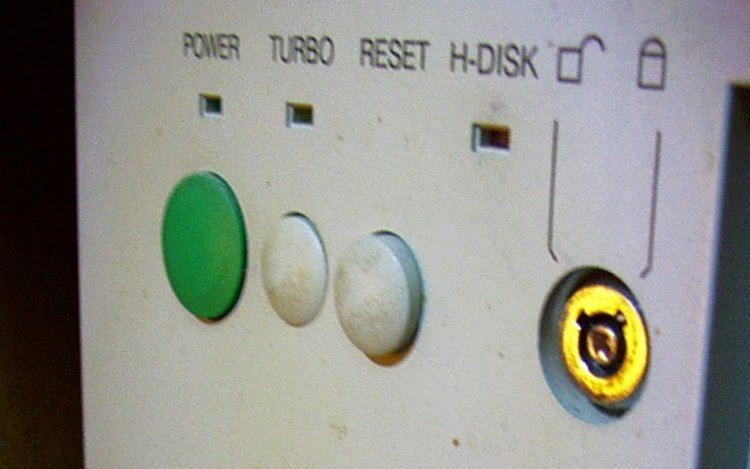 | ||
On personal computers, the turbo button is a button which provides two run states for the computer, normal (full) speed, or a reduced speed.
Contents
The name is inspired by turbocharger, a turbine-driven forced induction device that increases an engine's power and efficiency.
Effect
The turbo button was added to many computers using CPUs produced after the original 4.77 MHz Intel 8086. Some software titles (games in particular) used the CPU's frequency for timing, so as faster chips came out, some of these games were unplayable. To provide a layer of compatibility for these titles, the "turbo" button was added. The name itself is an intentional misnomer, as the button does not boost the speed; engaging it slows the system down to a state compatible with original 8086/8088 chips. The turbo button was often linked to a MHz LED display on the system case, or to a "hi"/"lo" LED display. The feature was relatively common on systems running 286 or 386 CPUs, and rarely on 486 or first generation Pentium CPU equipped computers. Soon afterwards, software creators used different methods for keeping time within games, making this feature obsolete.
Some systems also supported keyboard combinations Ctrl-Alt-+ and Ctrl-Alt-- for switching turbo mode on and off; ITT Xtra used Ctrl-Alt- to toggle.
Software implementations
While the implementation of the turbo button by manufacturers has disappeared, software developers have compensated with software replacements. One example is DOSBox, which offers full turbo button functionality with adjustable clock speed. Modern PCs that support ACPI power management may provide software controls to switch ACPI performance states or other CPU throttling modes.
Turbo button on keyboard
Some keyboards had a turbo button too, located near right Shift. Unlike the turbo button that was common on computer cases, the turbo button on the keyboards didn't control the clock rate of the CPU; rather, it controlled the keyboard repeat rate.
